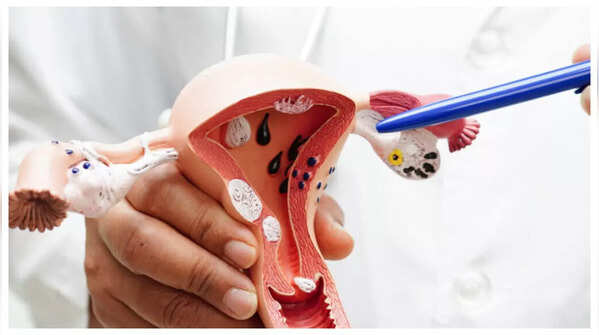Cervical cancer, a malignancy originating in the cervix, the lower part of the uterus connecting to the vagina, is primarily triggered by persistent HPV (human papillomavirus) infections, a common sexually transmitted disease. While most HPV infections resolve naturally, the persistence of high-risk strains can lead to cervical cancer. Early detection is crucial for successful treatment. The slow progression of this cancer can lead to easily missed signs and symptoms. Here are five early indicators of cervical cancer that may go unnoticed:

One of the earliest warning signs of cervical cancer is unusual vaginal bleeding. This can manifest as:
Irregular bleeding is common and often attributed to hormonal fluctuations or infections. However, any deviation from your normal bleeding pattern warrants medical evaluation, even if cancer is not suspected.

A minimal amount of vaginal discharge is typical, especially around ovulation. However, changes can signal a problem. While vaginal discharge varies in amount and texture during the menstrual cycle, cervical cancer can cause:
This discharge may occur between periods or after menopause. Dismissing it as an infection or irritation is common, but medical evaluation is essential.

Pain or discomfort during sex, while often linked to infections or hormonal changes, can also be an early indicator of cervical cancer. This pain might feel like:
Many women avoid discussing this sensitive symptom, but persistent pain during intercourse is abnormal and should be evaluated by a healthcare professional to rule out serious underlying causes, including cervical cancer.

Mild pain in the lower back or pelvis can stem from common issues like muscle strain or menstrual cramps. However, persistent or unexplained pain in these areas, especially when accompanied by abnormal bleeding or discharge, may indicate early cervical cancer.
This pain is often described as a dull ache or pressure between the hip bones or in the lower abdomen. Overlooking this symptom due to its commonality is frequent. If pelvic or lower back pain persists despite home remedies, seek medical evaluation.

Early cervical cancer can affect adjacent tissues, including the bladder and urinary tract, leading to symptoms such as:
These symptoms are often mistaken for urinary tract infections (UTIs), which are prevalent in women. However, persistent urinary symptoms despite UTI treatment warrant further investigation to exclude cervical cancer.

Awareness and regular health checkups are crucial for early detection. Furthermore, the HPV vaccine offers protection against HPV types responsible for cervical, vaginal, vulvar, penile, anal, and oropharyngeal cancers, as well as genital warts. Women can receive the vaccine as early as 11 or 12 years of age, up to age 45 (consult your doctor).

Newer articles
Older articles
 Earth's Spin Accelerating: Scientists Predict Potential 'Negative Leap Second' by 2029
Earth's Spin Accelerating: Scientists Predict Potential 'Negative Leap Second' by 2029
 5 Subtle Signs of Cervical Cancer Women Often Miss
5 Subtle Signs of Cervical Cancer Women Often Miss
 Hair Oil vs. Hair Serum: Choosing the Right Treatment for Your Hair Type
Hair Oil vs. Hair Serum: Choosing the Right Treatment for Your Hair Type
 Steven Smith Targets Test Return After Unique Baseball Cage Recovery in New York
Steven Smith Targets Test Return After Unique Baseball Cage Recovery in New York
 Liver Disease: 5 Subtle Warning Signs You Shouldn't Ignore
Liver Disease: 5 Subtle Warning Signs You Shouldn't Ignore
 Heart Attack Warning: Key Signs That Can Appear Weeks in Advance
Heart Attack Warning: Key Signs That Can Appear Weeks in Advance
 Bollywood's Enduring Fascination with Indian Mythology: From Ramayana to Modern Blockbusters
Bollywood's Enduring Fascination with Indian Mythology: From Ramayana to Modern Blockbusters
 New Zealand Announces Packed Home Cricket Schedule Featuring Australia, England, West Indies, and South Africa
New Zealand Announces Packed Home Cricket Schedule Featuring Australia, England, West Indies, and South Africa
 Wimbledon Upset: Bhambri & Galloway's Doubles Run Halted in Tiebreak Thriller
Wimbledon Upset: Bhambri & Galloway's Doubles Run Halted in Tiebreak Thriller
 Daren Sammy Fined, Receives Demerit Point for Third Umpire Criticism After Test Match
Daren Sammy Fined, Receives Demerit Point for Third Umpire Criticism After Test Match